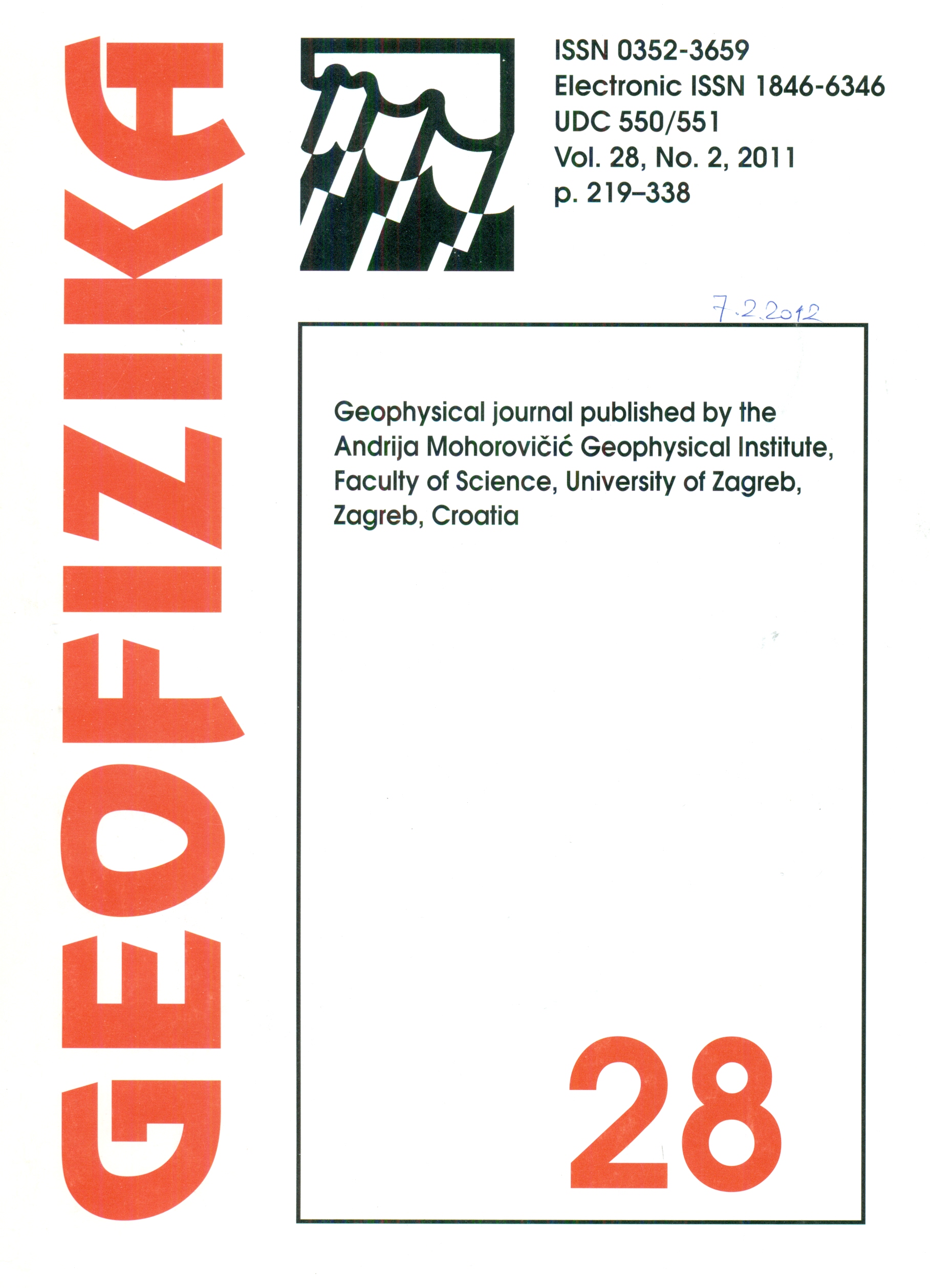Secular trends in indices of precipitation extremes in Croatia, 1901–2008
Keywords:
trend analysis, precipitation variability, indices of precipitation extremes, seasonal precipitation, annual precipitation, GEV distribution, CroatiaAbstract
In this study, trends in annual and seasonal precipitation amounts in Croatia are discussed. This discussion is followed by trend analysis in seven indices of precipitation extremes, which indicate intensity and frequency of extreme rainfall events. These indices have been proposed by World Meteorological Organisation and are calculated using daily precipitation amounts. The data sets used in this study cover the period 1901-2008 at five meteorological stations distributed among different climate conditions in Croatia: continental, mountainous and maritime. The trends are estimated by a simple least squares fit of the linear model and tested for statistical significance by a non-parametric Mann-Kendall test. The time series with significant trends are identified, and a Sneyers progressive analysis is then performed to determine the beginning of the trend. The time series analysis of coefficients of variation in consecutive 30-year periods indicates the variability in precipitation. The extreme quantiles for annual one-day and five-day precipitation maxima have been estimated by the Generalised Extreme Value (GEV) distribution and discussed in relation to the original time-series. The results show a downward trend in annual precipitation amounts since the beginning of the 20th century throughout Croatia, which agrees with the drying trend observed across the Mediterranean. Precipitation amounts have large interannual variability, on both annual and seasonal scales. By the end of the 20th century, the precipitation variability decreased in the north-western Croatian mountainous and northern littoral regions and the eastern lowlands. The Dalmatian Islands experienced increased variability since the middle of the 20th century. In regions of drying, such as Croatia, there is no evidence of major secular changes in precipitation extremes that are related to the high amounts of precipitation and the frequency of heavy rainfall days over the majority of Croatia.
Downloads
Published
Issue
Section
License
Copyright (c) 2021 Geofizika journal

This work is licensed under a Creative Commons Attribution-NonCommercial 4.0 International License.

